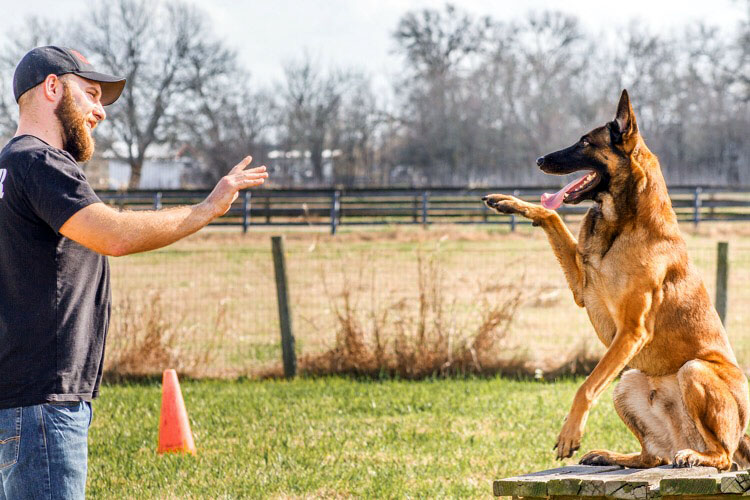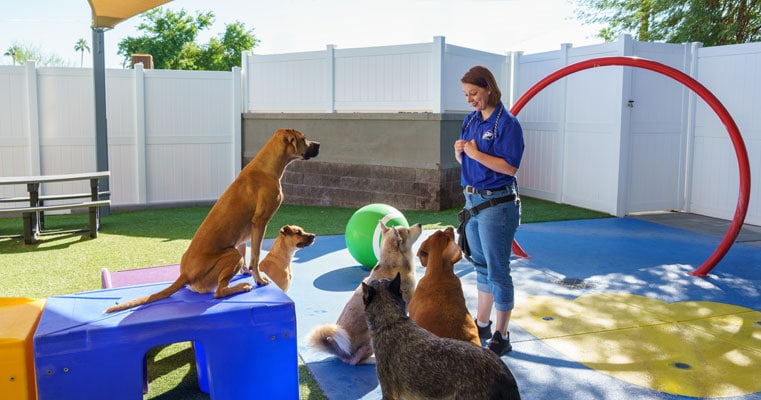Transform Your Pet dog's Behavior With Proven Training Methods
Changing your dog's behavior needs a nuanced understanding of their individual attributes and requirements, along with the application of tried and tested training techniques. By utilizing favorable support and recognizing essential hints in their body language, you can properly resolve common behavior problems such as excessive barking or leaping. Consistency in your training method not only improves obedience but also fosters a much deeper bond of trust fund and regard in between you and your family pet. The course to effective transformation might provide unpredicted challenges that warrant more exploration.
Recognizing Canine Behavior
Comprehending canine habits is necessary for efficient training and communication in between humans and their canine companions. Pets, as social animals, show a series of habits influenced by genes, atmosphere, and experiences - Dog training. Identifying these behaviors aids owners tailor their training approaches to meet the particular demands of their pet dogs
Secret elements of dog actions include body movement, articulations, and social communications. As an example, a wagging tail usually suggests enjoyment, while a decreased head may signify submission or fear. Understanding these signals can help proprietors interpret their pet's psychological state and respond properly. Additionally, socializing plays a vital role in forming behavior; dogs that engage positively with various people and other animals are normally a lot more versatile and well-adjusted.
Additionally, acknowledging stress and anxiety signals-- such as avoidance, panting, or pacing behaviors-- can stop escalation into a lot more significant issues. Owners who are attuned to their canine's habits can develop a nurturing and safe setting, cultivating depend on and enhancing the training process. Inevitably, a deep understanding of canine habits lays the foundation for a harmonious relationship and effective training outcomes, making sure both canines and their owners prosper with each other.
Favorable Reinforcement Techniques
Favorable support strategies are extensively recognized as one of one of the most reliable techniques for training canines, fostering a favorable learning environment. This method involves satisfying preferred actions with deals with, appreciation, or play, therefore motivating the pet to duplicate those actions. Unlike vindictive techniques, favorable support constructs count on and reinforces the bond between the pet and the fitness instructor.
To execute positive support successfully, timing is crucial. Incentives need to be offered promptly following the preferred habits to assist the pet dog make the link. Uniformity is also necessary; making use of the same commands and rewards assists the pet comprehend what is expected. Additionally, differing the incentives can maintain the canine involved - Dog training. As an example, rotating between treats, toys, and verbal praise can keep passion and inspiration.
It is essential to keep in mind that positive reinforcement is not concerning bribery; instead, it has to do with strengthening good habits. In time, as the dog learns to associate particular activities with favorable end results, the frequency of incentives can be progressively reduced, transitioning to verbal praise or intermittent rewards. This approach not only urges obedience but also promotes a certain and delighted pet, making training a more pleasurable experience for both celebrations involved.
Dealing With Typical Issues
Resolving typical concerns throughout dog training is vital for ensuring a effective and unified partnership between the pet and its owner. Many dog owners encounter behavioral challenges, such as too much barking, leaping, and chain drawing. Understanding the root causes of these habits is crucial for reliable training.
To alleviate this, provide enough physical exercise, psychological stimulation, and opportunities for social interaction with both humans and other dogs. Educating the pet to rest upon welcoming can reroute this actions favorably.
Leash drawing is one official statement more prevalent problem, often resulting from a pet dog's passion to discover. Utilizing appropriate chain managing techniques, incorporated with training protocols that motivate loose-leash strolling, can significantly boost this behavior.
On top of that, issues like resource safeguarding or splitting up anxiousness need tailored methods. Gradual desensitization and counter-conditioning can be browse around these guys efficient in dealing with these difficulties. By acknowledging and proactively handling these common problems, canine proprietors can foster a more enjoyable training experience and enhance the bond with their canine buddies.
Consistency in Training

To accomplish consistency, it is crucial that all participants of the household follow the same training approaches. Using the same verbal signs and hand signals ensures that the dog receives uniform messages. Furthermore, the timing of corrections and rewards need to correspond; instant support increases the possibility that the pet will certainly link the behavior with the result.
Regular technique sessions, combined with organized routines for feeding, strolling, and play, assistance canines expect and recognize their setting, making them more responsive to training. Eventually, consistency promotes a sense of safety and security and trust, encouraging dogs to find out a lot more successfully.
Structure a Strong Bond
Exactly how can fostering a strong bond between a canine and its proprietor enhance the training experience? When a dog really feels safe in its connection with its proprietor, it is more likely to show favorable actions and be receptive to discovering.
Additionally, a strong bond promotes More Help far better communication. Pets are skilled at reading human cues, and a relying on relationship permits more clear signals throughout training. Owners that invest time in building this bond with play, socialization, and favorable support develop an atmosphere where pets really feel motivated and excited to discover.
In addition, a well-established connection can reduce stress and anxiety and behavioral problems, as canines are less most likely to act out when they feel comprehended and looked after. For that reason, focusing on the advancement of a strong bond not just boosts the training experience however likewise adds to a happier and much more well-adjusted dog. Ultimately, the journey of training transforms right into a collaborative partnership, bring about lasting behavioral renovations.
Verdict

Owners that are attuned to their canine's behavior can create a caring and secure atmosphere, promoting depend on and boosting the training procedure. Ultimately, a deep understanding of canine habits lays the structure for a harmonious connection and effective training results, making certain both canines and their proprietors flourish together.
Resolving typical problems during pet dog training is important for ensuring a successful and harmonious relationship between the canine and its proprietor.Uniformity is a cornerstone of effective canine training, as it develops a clear structure for the dog to understand assumptions and behaviors.In conclusion, changing a dog's behavior via shown training approaches needs an understanding of canine behavior, the application of positive reinforcement techniques, and a focus on uniformity.
Comments on “Dog Training Techniques to Help Manage Aggressive Behavior in Dogs”